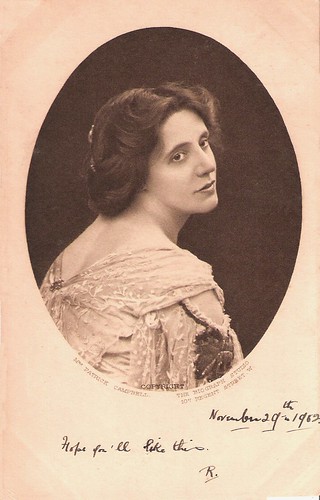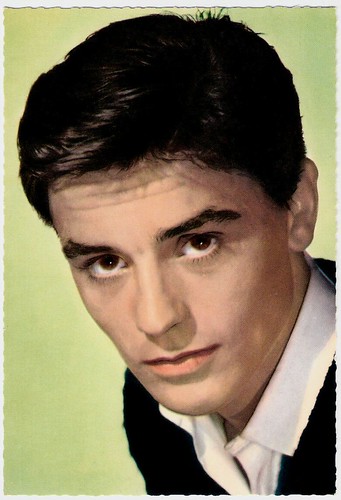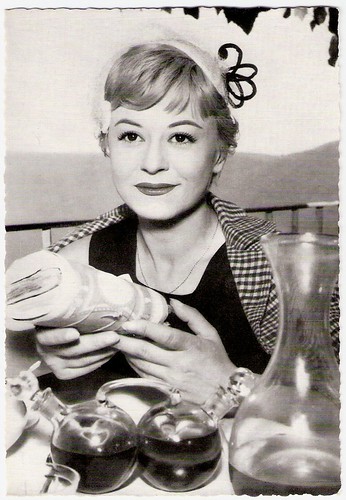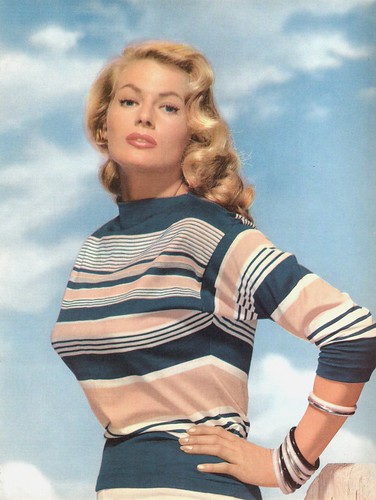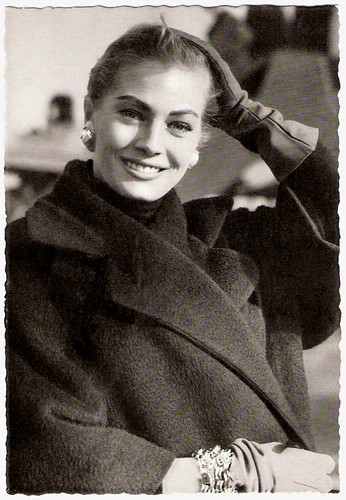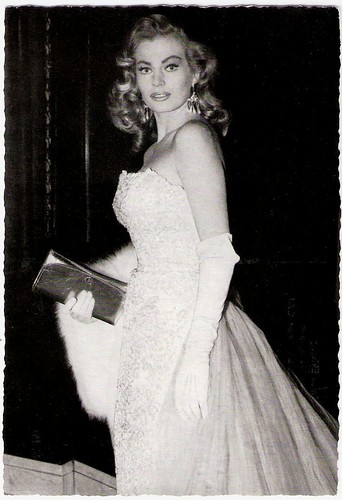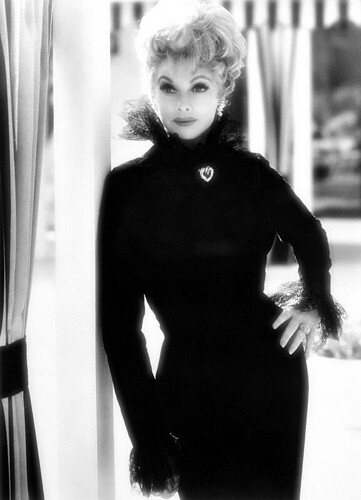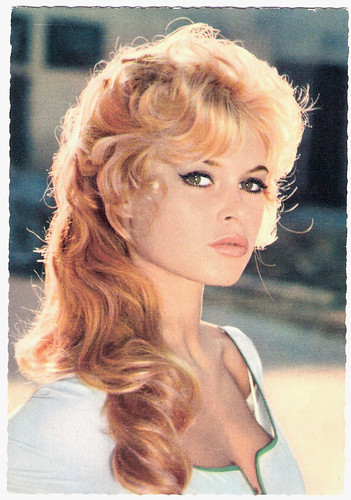British postcard by The Biograph Studio, London. Sent by mail in 1902.
British actress Mrs Patrick Campbell (1865-1940) was by far the biggest name on the London stage of the belle époque, famous for her wit, temperament and beauty. She was the original Eliza Dolittle in Pygmalion (1914) a part written especially for her by her lifelong friend George Bernard Shaw. In her later years, ‘Mrs. Pat’ made notable film appearances as a dowager in One More River (1934) and in Crime and Punishment (1935).
Mrs. Patrick Campbell was born Beatrice Stella Tanner in Kensington, London, in 1865. Her parents were John Tanner and Maria Luigia Giovanna, daughter of Count Angelo Romanini. She studied for a short time at the Guildhall School of Music. She was well-known as an amateur before she made her stage debut in 1888 at the Alexandra Theatre, Liverpool, four years after her marriage to Patrick Campbell. In March, 1890, she appeared in London at the Adelphi, where she afterward played again in 1891–93. She became successful as a result of starring in Sir Arthur Wing Pinero's play, The Second Mrs Tanqueray, in 1893, at St. James's Theatre where she also appeared in 1894 in The Masqueraders. As Kate Cloud in John-a-Dreams, produced by Beerbohm Tree at the Haymarket in 1894, she made another success, and again as Agnes in The Notorious Mrs. Ebbsmith at the Garrick (1895). Among her other performances were those in Fédora (1895), Little Eyolf (1896), and her notable performances with Forbes-Robertson at the Lyceum in the roles of Juliet in Romeo and Juliet, Ophelia in Hamlet, and Lady Macbeth (1895–1898) in Macbeth. Her first marriage to Patrick Campbell in 1884, from which she took the name by which she is generally known, produced two children, Alan Urquhart ('Beo'), who was killed in WWI, and Stella, who married an American and moved to Chicago. Campbell’s own marriage ended with the death of her husband in the Boer War in 1900. Fourteen years later, she became the second wife of Major George Frederick Myddleton Cornwallis-West, a dashing writer and soldier previously married to Jennie Jerome, the mother of Sir Winston Churchill.
In 1902, Mrs. Patrick Campbell made her debut performance on Broadway in New York City in Hermann Sudermann’s Magda, a marked success. Subsequent Broadway roles included The Joy of Living (1902), as Melisande to the Pelleas of Sarah Bernhardt in Maurice Maeterlinck’s Pelléas et Mélisande (1904), as Hedda Gabler in Henrik Ibsen’s play of the same name (1907), The Thunderbolt (1908), Lady Patricia (1911), and Bella Donna (1911). She would return to perform there on a number of occasions until 1930. She was described by one American producer as a temperamental actress whose "grand sense of humor and outstanding charm made you laugh instead of strangle her". One of her most famous quotes was " It doesn't matter what you do in the bedroom as long as you don't do it in the streets and frighten the horses." In 1914, she played Eliza Doolittle in the original production of George Bernard Shaw's Pygmalion; though much too old for the part at 49, she was the obvious choice, being by far the biggest name on the London stage, and Shaw would have seen it no other way since he wrote the play for her in particular. She and Shaw conducted a famous correspondence for many years. Despite her second marriage, to George Cornwallis-West, she continued to use the stage name Mrs Patrick Campbell. Her last stage appearance came in 1933.
Mrs. Patrick Campbell had made her film début in the silent film The Money Moon (1920, Fred Paul). When the sound film came along, she went to Hollywood and appeared in The Dancers (1930, Chandler Sprague) with Lois Moran and Mae Clarke. She also became a speech teacher and dialogue coach and made instructional films for aspiring actors who wanted to break into the sound film. Campbell herself made some notable film appearances, including Riptide (1934, Edmund Goulding) starring Norma Shearer, One More River (1934, James Whale) with Diana Wynyard, and as the villainous pawnbroker in Crime and Punishment (1935, Josef von Sternberg) featuring Peter Lorre. She was legendary for making astonishingly inappropriate remarks. She undoubtedly lost her chance for a career in Hollywood when, at a party, she approached MGM executive Irving Thalberg, married to Norma Shearer, and said: "Dear Mr. Thalberg, how is your lovely, lovely wife with the tiny, tiny eyes?". Mrs. Patrick Campbell died in 1940 in Pau, France, at age 75. The onset of WWII had caught her in the French Pyrenees, ill and destitute. She could not return to England because quarantine laws would have imprisoned her Pekinese, Moonbeam. Her nurse cabled Sara and Gerald Murphy for funds, which were sent but arrived too late and were used to bury the former diva in the Cimetiere Urbain at Pau.
Sources: Hans J. Wollstein (All Movie Guide), Harry Rusche (Shakespeare’s World), Encyclopaedia Britannica, Wikipedia, and IMDb.
Mrs. Patrick Campbell
Mrs Patrick CampbellJacques Sernas
Jacques SernasLithuanian-born French actor Jacques (sometimes: Jack) Sernas (1925) had an international film career of more than sixty years. First the handsome blonde appeared as the hero of peplum spectacles and adventure films and later he worked as a character actor. Sernas is perhaps best-known as Paris in the Hollywood epic Helen of Troy (1956)
Elissa Landi
Elissa LandiItalian born actress and writer Elissa Landi (1904–1948) was rumoured to be a descendant of Emperor Franz Joseph of Austria. During the 1920’s she appeared in British, French, and German films before travelling to the United States. In Hollywood she became a popular star of the 1930’s.
Elvire Popesco
Elvire PopescoElvire Popesco (1894-1993) was a French actress of Romanian origin. In the twenties she went to Paris, where she conquered the stages with her comic talent and heavy accent. In the thirties she became a popular film star, who worked with such great directors as Julien Duvivier, Abel Gance, Sacha Guitry, and Marc Allégret.
Alain Delon
Alain DelonIn the late 1950’s and early 1960’s Alain Delon (1935) was the breathtakingly good-looking James Dean of the French cinema. The “male Brigitte Bardot” soon proved to be a magnificent actor in masterpieces by Luchino Visconti and Michelangelo Antonioni. In the late sixties Delon came to epitomise the calm, psychopathic hoodlum in the 'policiers' of Jean-Pierre Melville, staring into the camera like a cat assessing a mouse
Lana Turner was an American film and television actress
Lana TurnerJulia Jean "Lana" Turner was an American film and television actress. Discovered and signed to a film contract by Metro-Goldwyn-Mayer at the age of sixteen, Turner first attracted attention in They Won't Forget. She played featured roles, often as the ingenue, in such films as Love Finds Andy Hardy. During the early 1940s she established herself as a leading actress in such films as Johnny Eager, Honky Tonk, Ziegfeld Girl and Somewhere I'll Find You. She is known as one of the first Hollywood scream queens thanks to her role in the 1941 horror film Dr. Jekyll and Mr. Hyde, and her reputation as a glamorous femme fatale was enhanced by her performance in the film noir The Postman Always Rings Twice. Her popularity continued through the 1950s, in such films as The Bad and the Beautiful and Peyton Place, for which she was nominated for an Academy Award for Best Actress. In 1958, her daughter, Cheryl Crane, stabbed Turner's lover Johnny Stompanato to death. A coroner's inquest brought considerable media attention to Turner and concluded that Crane had acted in self-defense
Gallery for vintage actress Lana Turner
Giulietta Masina
Giulietta MasinaItalian film and stage actress Giulietta Masina (1921-1994) starred in the classics La strada (1954) and Notti di Cabiria (1957), both directed by her husband Federico Fellini and both winners of the Oscar for Best Foreign Language Film. The only 1,57 m long Masina was often called the ‘female Chaplin’. The skilled, button-eyed comedienne could deliver intense dramatic performances of naive characters dealing with cruel circumstances.
Anita Ekberg
Anita EkbergSwedish film actress, party-girl and sex symbol Anita Ekberg (1931) was nicknamed The Iceberg. Miss Sweden 1950 was contracted by Howard Hughes, had a Hollywood career in the 1950’s, but got her real breakthrough in Italy. She made film history as the sensual, curvaceous film goddess who dances in the Trevi Fountain in Fellini’s La Dolce Vita (1960).
Anita Ekberg
Anita EkbergSwedish film actress, party-girl and sex symbol Anita Ekberg (1931) was nicknamed The Iceberg. Miss Sweden 1950 was contracted by Howard Hughes, had a Hollywood career in the 1950’s, but got her real breakthrough in Italy. She made film history as the sensual, curvaceous film goddess who dances in the Trevi Fountain in Fellini’s La Dolce Vita (1960).
Grace Kelly Dial M for Murder 1954
Grace KellyDial M for Murder is a 1954 American thriller film adapted from a successful stage play and directed by Alfred Hitchcock and released by Warner Bros. It stars Ray Milland as a retired tennis pro who wishes to have his wife killed, Grace Kelly as the wife, and Robert Cummings as her paramour. The supporting cast includes John Williams as the police detective who investigates the matter and Anthony Dawson as the man hired to do the killing.
The screenplay and the stage play on which it was based were both written by English playwright Frederick Knott (1916–2002), whose work tends to focus on women who innocently become the potential victims of sinister plots. The original play premiered in 1952 on BBC television, before being performed on the stage in the same year (West End in June, and then Broadway in October).
There is just one setting in the stage play: the living-room of the Wendices' flat in London (61A Charrington Gardens, Maida Vale). Hitchcock's film adds a second setting in a gentleman's club, a few views of the street outside and a stylized courtroom montage. Having seen the play on Broadway, Cary Grant was keen to play the role of Tony Wendice, but studio chiefs did not feel the public would accept him as a man who arranges to have his wife murdered.
In June 2008, the American Film Institute revealed its "Ten Top Ten"—the best ten films in ten "classic" American film genres—after polling over 1,500 people from the creative community. Dial M for Murder was ranked the ninth best film in the mystery genre in the list
plot
Tony Wendice (Milland) is an ex-professional tennis player who lives in a London flat with his wealthy wife, Margot (Kelly). Tony retired after Margot complained about his busy schedule, and she began an affair, which he secretly discovered, with American crime-fiction writer Mark Halliday (Cummings). Motivated by resentment, jealousy, and greed, Tony has devised a plan to have Margot murdered.
When Mark visits England, Margot introduces him to Tony as a casual acquaintance. After sending the two lovers out for the evening, Tony makes an excuse to meet at the flat with petty criminal C.A. Swann (Dawson), an old acquaintance from Cambridge. Tony has been following Swann in order to blackmail him into committing the murder. Tony tells Swann of Margot's affair, including a love letter from Mark which she once kept in her handbag. Six months ago, Tony stole the handbag and anonymously blackmailed her. After tricking Swann into leaving his fingerprints on the letter, Tony offers to pay him £1,000 to kill Margot. If he refuses, Tony will turn him in to the police as the blackmailer.
Cummings, Kelly, and Milland
When Swann agrees, Tony explains his plan: He will take Mark to a party, leaving Margot at home and hiding her latchkey under the carpet on the staircase outside the front door of the flat. Swann is to sneak into the flat after Margot goes to bed and hide behind the curtains in front of the French doors leading to the garden. When Tony telephones from the party, Margot will go to the phone. Swann is to kill her from behind, open the French doors, and leave signs suggesting a burglary gone wrong, then exit through the front door, again hiding the key under the staircase carpet.
The plan works until Tony phones the flat. Swann tries to strangle Margot with a scarf, but she stabs and kills him with a pair of scissors, then picks up the telephone receiver and pleads for help. Realizing the plan has gone wrong, Tony tells her not to do anything. At home, he finds what he assumes is Margot's latchkey in Swann's pocket and puts it in her handbag, then calls the police, sends Margot to bed, plants Mark's letter on Swann, and replaces Swann's scarf with one of Margot's stockings. He also persuades Margot to hide the fact that he told her not to call the police. The next day, Chief Inspector Hubbard (Williams) questions the Wendices and Margot makes several conflicting statements. When Hubbard explains that Swann must have entered through the front door, Tony falsely claims to have seen Swann after Margot's handbag was stolen and suggests that Swann made a copy of her key. Hubbard arrests Margot after concluding that she killed Swann for blackmailing her with Mark's letter when he came to collect.
Margot is sentenced to death for murder. On the day before her scheduled execution, Mark tries to persuade Tony to save her by telling the police that he hired Swann to kill her, not realizing that this is what actually happened. Tony refuses, insisting the story is too unrealistic, just before Hubbard arrives. With Mark hiding in the bedroom, Hubbard asks Tony about money he has been spending lately, tricks him into revealing that his latchkey is in his raincoat, and asks him about an attaché case. Tony claims to have lost the case, but Mark notices it on the bed, full of cash. Realizing his story is true, Mark stops Hubbard from leaving and explains his theory. Hubbard claims to prefer Tony's story that Margot gathered the money to pay Swann before deciding to kill him, but after Mark leaves, Hubbard discreetly swaps his own raincoat with Tony's, and as soon as Tony has left, he uses Tony's key to re-enter the flat. He really does suspect Tony, having discovered that the key in Margot's handbag was Swann's.
Mark returns after seeing Tony leave. Meanwhile, on Hubbard's orders, police officers release Margot outside. She tries to unlock the door with the key in her purse, then enters through the garden, proving she is unaware of the hidden key. Hubbard has the handbag returned to the police station, where Tony retrieves it after discovering that he has no key. When he is unable to unlock the front door with the key from the bag, he finds Margot's key on the staircase and opens the door, proving his guilt. With his escape routes blocked by Hubbard and another policeman, Tony surrenders. Source
Judy Canova arcade postcard - 1940s
Judy Canova
A true country singer, stgarted in radio in the 30s, singing on a program with some family members. In the 40s she became a popular star of movie (B comedies and musicals). In the mid 50s the interest in her much dated music and humor had died off and she retired
John Boles 1930, movies leading man
John BolesJohn Love Boles (October 28, 1895 – February 27, 1969) was an American actor. Boles was born in Greenville, Texas, into a middle-class family. He graduated with honors from the University of Texas in 1917 and married Marielite Dobbs in that same year. His parents wanted him to be a doctor and Boles studied and finally got his B.A. degree, but the stage called. John Boles preferred acting and singing, and he demonstrated talents for them from an early age and this won him a place alongside Gloria Swanson when she chose him to play in film with her. During World War I, he was a US spy in Germany, Bulgaria, and Turkey. He started out in Hollywood in the silent movie era, but became a huge star with the advent of talkies. After the war, Boles moved to New York to study music. He quickly became well-known for his talents and was selected to play the leading man in the 1923 Broadway musical Little Jesse James. He became an established star on Broadway source
Gallery for vintage actor John Boles
Richard Burton Hollywood actor born in Wales
Richard BurtonRichard Burton, CBE (10 November 1925 – 5 August 1984) was a Welsh actor. He was nominated seven times for an Academy Award, six of which were for Best Actor in a Leading Role (without ever winning), and was a recipient of BAFTA, Golden Globe and Tony Awards for Best Actor. Burton was at one time the highest-paid actor in Hollywood. He remains closely associated in the public consciousness with his second wife, actress Elizabeth Taylor; the couple's turbulent relationship was rarely out of the news. Richard Burton was born Richard Walter Jenkins in the village of Pontrhydyfen, Neath Port Talbot, Wales. He grew up in a working class, Welsh-speaking household, the twelfth of thirteen children. His father, Richard Walter Jenkins, was a short, robust coal miner, a "twelve-pints a-day man" who sometimes went off on drinking and gambling sprees for weeks source
Brigitte Bardot
Brigitte BardotBrigitte Bardot (1934) was the sex kitten of the European cinema. She was every man's idea of the girl he'd like to meet in Paris.
For more postcards, a bio and clips check out our blog European Film Star Postcards.
We continue our series of postcards of 'la belle BB'. ISV also produced this card with a photograph that must be taken at the same session, or is it even the same photo, mirrored and colored?
Brigitte Bardot
Brigitte BardotGerman postcard by ISV, nr. H 87.
Brigitte Bardot (1934) was the sex kitten of the European cinema. She was every man's idea of the girl he'd like to meet in Paris.
For more postcards, a bio and clips check out our blog European Film Star Postcards.
